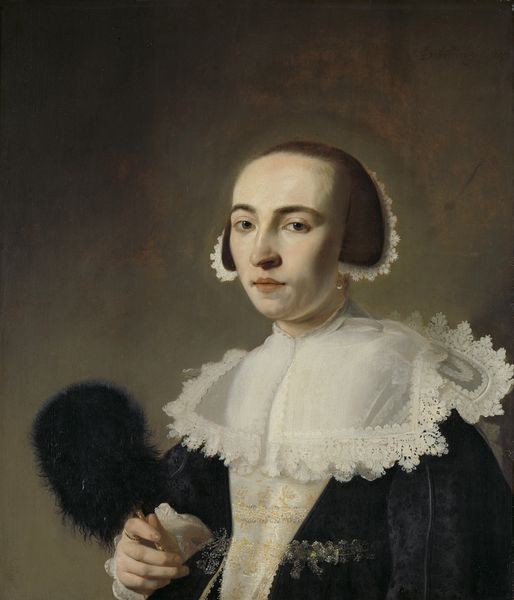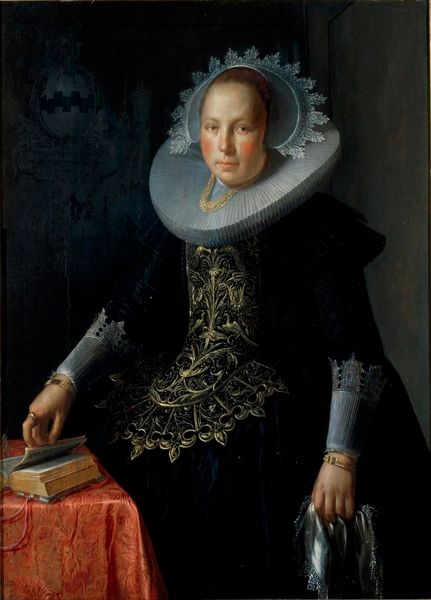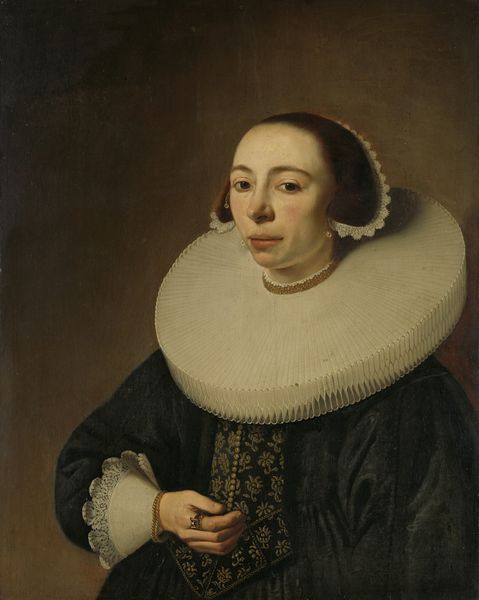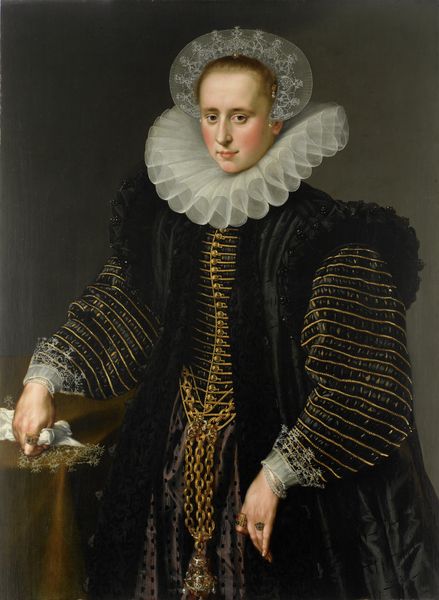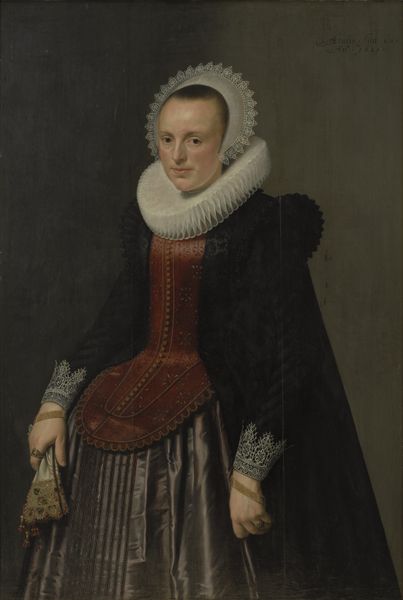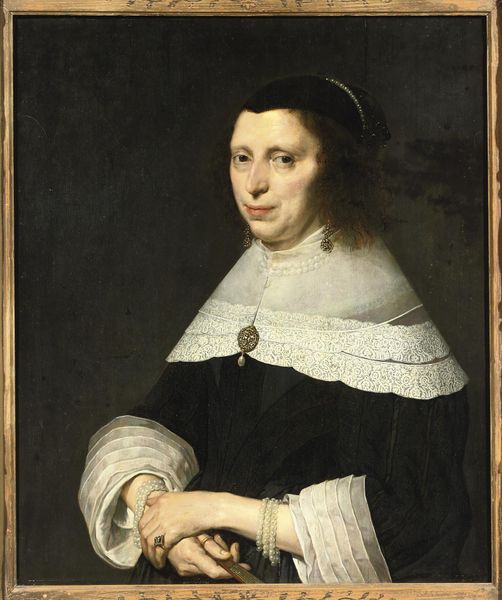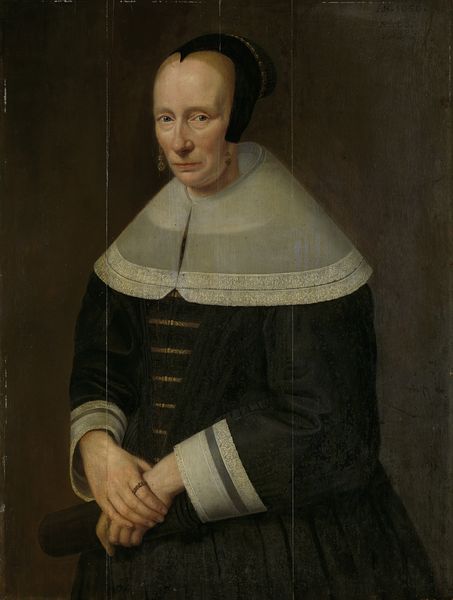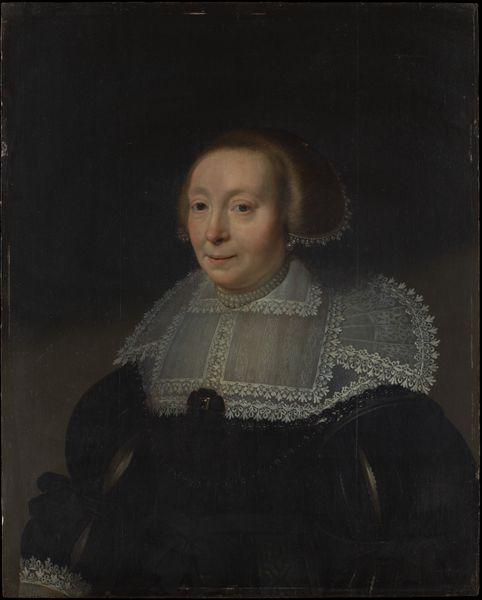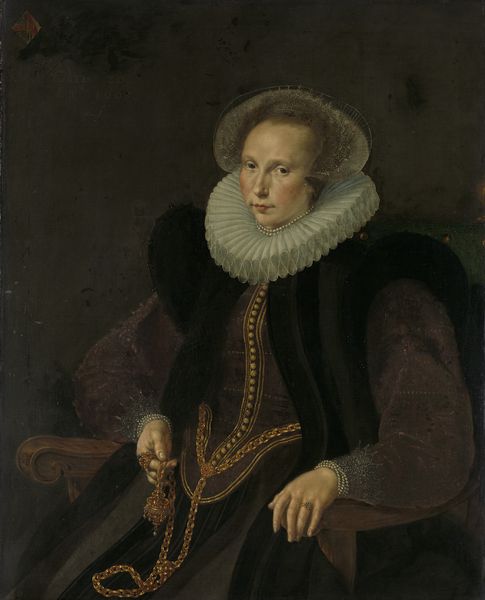
Elisabeth van Kessel (1640-1717), Wife of Willem Jacobsz Baert 1671
0:00
0:00
painting, oil-paint
#
portrait
#
self-portrait
#
baroque
#
painting
#
oil-paint
#
genre-painting
Dimensions: height 109 cm, width 90 cm
Copyright: Rijks Museum: Open Domain
Curator: Painted in 1671, this is Caesar Boëtius van Everdingen's portrait of Elisabeth van Kessel, wife of Willem Jacobsz Baert. The artwork, rendered in oil paint, provides a window into the world of Dutch Baroque portraiture. Editor: She looks incredibly sad. And yet there's something so dignified, almost defiant, in her stillness. It’s as if she's daring you to understand the depths of her melancholy. Curator: As a portrait of a wife from a prominent family, this painting performs a social function, establishing and commemorating status and lineage within Dutch society. Van Everdingen, known for history paintings, brought that attention to detail to his portraiture. Editor: Absolutely, and I find myself getting lost in the details. The intricate lace of her collar is almost hypnotic. What strikes me most is the colour palette, the contrast of the crisp, pure white against the sombre black of her dress. Is that just good observation, or a comment about something more profound, I wonder? Curator: Costume was central to signaling one’s place. The intricate collar marks wealth and status, adhering to the codes that governed the representation of women in this era. Notice how the simple stick she holds is also placed in such a way as to emphasize, but not flaunt, her sophistication. Editor: Right, and while she’s dressed with such restraint, she can't conceal those delicate, teardrop earrings! She seems very much a woman aware of herself, if not the picture. This piece really is a silent drama! It speaks volumes without a word. Curator: I think you have it. This portrait invites us to consider the subject and her role within a carefully constructed social tapestry. And through this analysis, we can see just how complex those tapestries truly were. Editor: Exactly. We might start by thinking about frills, but then, almost without our knowing it, we arrive somewhere near the human condition.
Comments
No comments
Be the first to comment and join the conversation on the ultimate creative platform.
